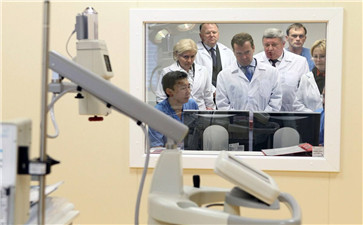第二军医大学孙树汉教授课题组使用Arraystar Human LncRNA芯片研究肝癌,连续发表了两篇Hepatology文章;近期,其课题组的研究成员应用Arraystar Mouse LncRNA芯片,首次发现了能抑制肝癌转移的新LncRNA――Dreh,该研究成果刊登在国际著名肝病研究杂志Hepatology上。(所有Arraystar LncRNA芯片均由康成提供技术服务)
研究背景:
乙型病毒性肝炎是华人人群中肝癌的首要因素。乙肝病毒表达的HBx蛋白能促进肝脏肿瘤的形成,但其分子机制仍不清楚。孙树汉教授课题组本次研究目的在于揭示HBx和热点分子――非编码RNA之间的关联。
研究思路:
应用美国Arraystar公司Mouse LncRNA V2.0芯片,研究人员分别对6只HBx转基因小鼠和对照组小鼠肝脏的LncRNA表达谱进行研究,筛选出差异表达的长链非编码RNA,其中LncRNA.Dreh(AK050349)表达量在所有年龄和性别的转基因小鼠中都显着下调,因此研究者将目标锁定在该分子上。
研究者对LncRNA.Dreh进行深入的功能分析,发现其能抑制细胞的增殖和迁移;进一步的研究发现LncRNA.Dreh抑癌作用背后的分子机制:它能结合中间丝蛋白并抑制其表达,通过改变细胞骨架结构和形态,阻止癌细胞的转移。
由于LncRNA.Dreh的保守性很高,在对50例临床样本(肝癌组织v.s.癌旁组织)的研究中发现:该分子在癌组织中表达量比正常组织低,并且和病人的预后相关;LncRNA.Dreh表达量高的病人复发率低并且生存期长。
研究意义:
该研究首次将乙肝病毒自身表达的HBx蛋白和肝脏组织中的LncRNA关联起来。发现了LncRNA对细胞骨架结构的调控作用,由此来抑制癌细胞的转移。找到了新的肝癌预后标志物,其研究有着重大的临床意义。(生物谷Bioon.com)

DOI: 10.1002/hep.26195PMC:PMID:
HBx-related lncRNA Dreh inhibits hepatocellular carcinoma metastasis by targeting the intermediate filament protein vimentin
Jin-feng Huang1,†, Ying-jun Guo1,†, Chen-xi Zhao1, Sheng-xian Yuan2, Yue Wang1, Guan-nan Tang1, Wei-ping Zhou2, Shu-han Sun1,‡,*
The hepatitis B virus X protein (HBx) has been implicated as an oncogene in both epigenetic modifications and genetic regulation during hepatocarcinogenesis, but the underlying mechanisms are not entirely clear. Long non-coding RNAs (lncRNAs), which regulate gene expression with little or no protein-coding capacity, are involved in diverse biological processes and in carcinogenesis. We asked whether HBx could promote hepatocellular carcinoma (HCC) by regulating the expression of lncRNAs. In this study, we investigated the alteration in expression of lncRNAs induced by HBx using microarrays and real-time quantitative PCR. Our results indicate that HBx transgenic mice have a specific profile of liver lncRNAs compared with wild-type mice. We identified an lncRNA, down-regulated expression by HBx (termed lncRNA-Dreh), which can inhibit HCC growth and metastasis in vitro and in vivo, act as a tumor suppressor in the development of HBV-HCC. LncRNA-Dreh could combine with the intermediate filament protein vimentin and repress its expression, further change the normal cytoskeleton structure to inhibit tumor metastasis. We also identified a human ortholog RNA of Dreh (hDREH) and found that its expression level was frequently down-regulated in HBV-related HCC tissues in comparison with the adjacent noncancerous hepatic tissues, and its decrement significantly correlated with poor survival of HCC patients. Conclusion: Our findings support a role of lncRNA-Dreh in tumor suppression and survival prediction in HCC patients. Our discovery contributes to a better understanding of the importance of the deregulated lncRNAs by HBx in HCC and provides a rationale for the potential development of lncRNA-based targeted approaches for the treatment of HBV-related HCC.
(责任编辑:haozongdi)
分享到:









发表评论 取消回复